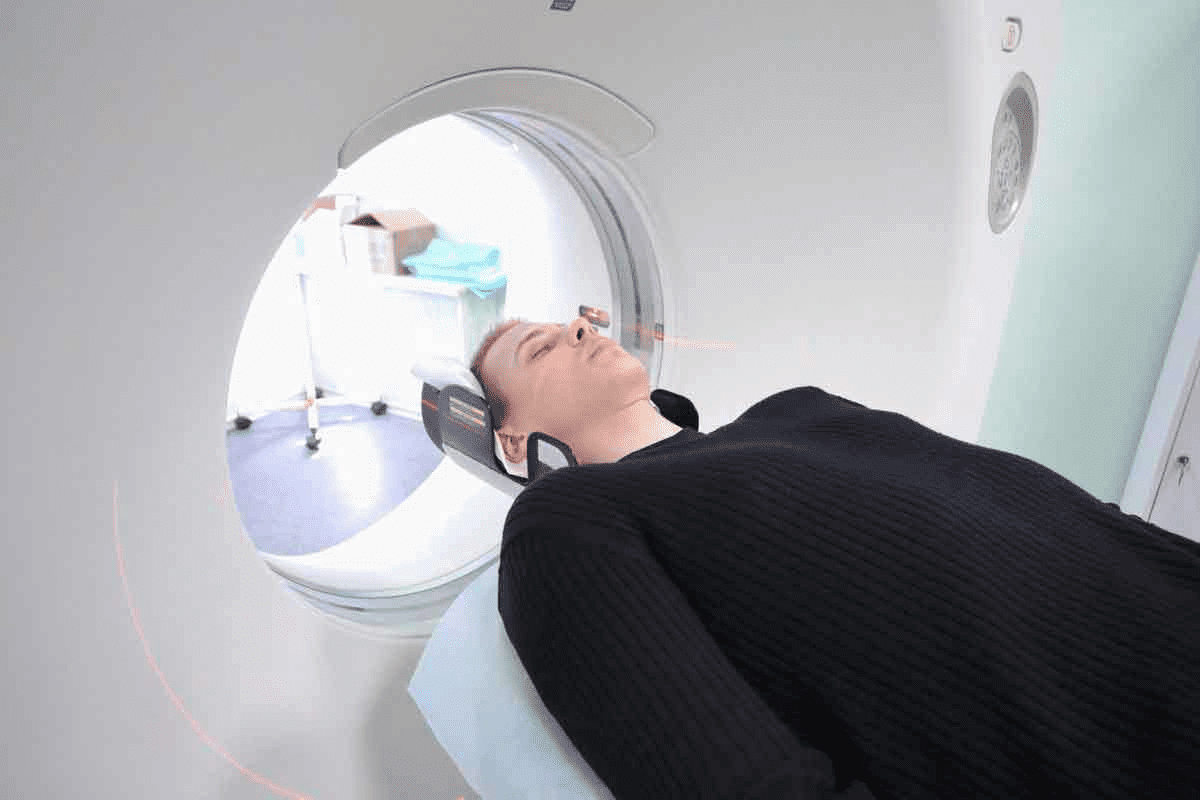Last Updated on November 26, 2025 by Bilal Hasdemir

Heart disease patients often get a coronary stent to improve blood flow. It’s normal to worry about the stent’s stability after it’s put in. Today’s stents are made to stick well to the artery wall right after they’re placed, making stent migration much less likely.
At Liv Hospital, we tell our patients that stent movement is very rare. We focus on you, making sure you know what to expect and feel confident during your recovery.
Key Takeaways
- Modern stents are designed to stay in place by embedding into the artery wall.
- The risk of stent migration is significantly reduced with current technology.
- Patient care and guidance are key for a smooth recovery.
- Liv Hospital provides full support for international patients.
- Advanced cardiac care is tailored to each patient’s needs.
Understanding Coronary Stents: Purpose and Design

Coronary stents are small, mesh-like devices that play a key role after angioplasty. They are designed to support the artery walls, preventing them from narrowing again. This is known as restenosis.
What is a Coronary Stent?
A coronary stent is a small, metal mesh device used during angioplasty. It keeps the artery open, improving blood flow to the heart. Stents are mainly used to treat coronary artery disease (CAD), caused by plaque buildup.
The stent is placed on a balloon catheter. This is then guided to the blockage site. When the balloon is inflated, the stent expands, holding the artery open. After, the balloon is deflated and removed, leaving the stent to support the artery.
How Stents Are Designed to Stay in Place
Coronary stent design has greatly improved over time. Modern stents are made from materials that are safe for the body. Drug-eluting stents (DES) are a big advancement, releasing medication to prevent cell growth and reduce restenosis risk.
Let’s look at some key features of stent design:
| Feature | Description | Benefit |
| Mesh Structure | Allows for flexibility and conforms to the artery shape | Reduces risk of artery damage |
| Drug Elution | Releases medication to prevent cell growth | Reduces risk of restenosis |
| Biocompatible Materials | Made from materials that are safe for the body | Minimizes risk of adverse reactions |
Modern coronary stents are very effective at keeping arteries open. They improve patient outcomes. Understanding stent design and purpose is important for patients, showing the role stents play in their treatment and recovery.
Can a Stent Move After Placement? The Science Explained

Patients often worry if a stent can move after it’s placed. This is a valid concern, as the stent is vital for keeping the artery open. We’ll look into the science behind stent placement and what affects its stability.
Integration Process with Blood Vessel Lining
When a stent is put in a coronary artery, it starts to bond with the lining almost right away. This bonding is helped by the body’s natural reaction to the stent. Over time, the stent gets covered by new cells, making it more stable.
The bonding process is key to preventing stent movement. As the stent becomes part of the artery wall, the chance of it moving goes down a lot. Modern stents, like drug-eluting ones, are very good at staying put because of this bonding.
“The development of drug-eluting stents has significantly improved the outcomes of patients undergoing percutaneous coronary intervention by reducing the incidence of restenosis.”
Source: Journal of the American College of Cardiology
Factors That Influence Stent Stability
While bonding is important, other things can also affect how stable a stent is. These include:
- The design and material of the stent
- The size and location of the stent in the artery
- The patient’s overall vascular health
- Any conditions that might affect healing, like diabetes
| Factor | Influence on Stent Stability |
| Stent Design and Material | Modern stents are made to be flexible and strong, lowering the risk of movement. |
| Size and Location | Getting the size and placement right is key for stent stability. |
| Vascular Health | Patients with healthier vessels tend to have better stent bonding. |
Knowing about these factors and the bonding process can ease worries about stent movement. Even though the risk is low with today’s stent technology, being informed is important for patient peace of mind and managing expectations.
The Reality of Stent Migration: How Common Is It?
It’s important for patients and doctors to know about stent migration. This issue has become less common thanks to new medical technology.
Modern Stent Technology and Migration Rates
New stent designs and materials have cut down stent migration rates. Studies show that today’s stents have a migration rate under 1 percent. This is a big drop from older stents, thanks to:
- Improved stent design: Modern stents fit better with the blood vessel walls, making migration less likely.
- Advanced materials: New materials make stents more stable after they’re placed.
- Better deployment techniques: New ways of placing stents ensure they stay in the right spot, reducing movement risk.
Medical Expert’s study on stent progress shows how far we’ve come. He says, “Stent technology has evolved a lot, cutting down on problems like migration.” This highlights the need to keep up with medical advancements.
Risk Factors That May Increase Movement
Even with modern stents, some factors can raise the risk of stent movement. These include:
- Complex coronary anatomy: Patients with complex heart disease may face a higher risk of stent migration.
- Inadequate stent sizing: If a stent doesn’t fit right, it may not stay in place, raising migration risk.
- Lesion characteristics: The type and location of the heart problem being treated can affect stent stability.
Doctors need to carefully consider these factors before placing a stent. This helps lower risks and improve patient outcomes.
As we keep improving stent technology and how we use it, stent migration should keep going down. This will make treatments safer and more effective for patients.
Recognizing Possible Stent Movement: Warning Signs
Knowing the signs of stent movement is key to treatment success. After a coronary stent is put in, it’s important to listen to your body. Knowing when to get medical help is also vital.
Symptoms That May Indicate Stent Displacement
Stent migration is rare today, but watching for symptoms is wise. Some signs of stent displacement include:
- Chest pain or discomfort, feeling like pressure or tightness
- Shortness of breath, even at rest or doing light activities
- Dizziness or feeling faint
- Severe fatigue
- Palpitations or irregular heartbeats
These symptoms can mean different heart problems, not just stent issues. But, it’s important to take them seriously and see a doctor.
When to Seek Immediate Medical Attention
If you have severe chest pain that lasts more than a few minutes, get help right away. Also, seek immediate help if you have:
- Shortness of breath that’s severe or with other symptoms like dizziness or chest pain
- Symptoms that get worse over time
Quick medical check-ups can find the cause of your symptoms. They can also guide the right treatment.
Here’s a quick guide on when to seek help:
| Symptom | Action |
| Chest pain or discomfort | Seek medical help if severe or persistent |
| Shortness of breath | Seek immediate help if severe or with other symptoms |
| Dizziness or fainting | Consult a healthcare provider |
Knowing these warning signs and acting fast can greatly improve outcomes for those with coronary stents. Regular check-ups with your doctor are also very important. They help keep an eye on your condition and address any worries.
Stent Failure Symptoms: Beyond Movement Concerns
Stent failure can show itself in many ways, not just movement issues. It’s important to know these symptoms to get help quickly.
Common Indicators of Stent Complications
Stent problems can cause several symptoms. You might feel chest pain, have trouble breathing, or feel very tired. These signs mean the stent might not be working right.
Chest pain is a big warning sign. It could mean the artery is getting narrow again or there’s a problem with the stent.
- Chest pain or discomfort
- Shortness of breath
- Fatigue or weakness
- Palpitations or irregular heartbeat
Restenosis vs. Stent Movement
Restenosis, or the artery getting narrow again, is a big worry after a stent is put in. It’s key to tell restenosis apart from stent movement. Each needs a different treatment plan.
| Condition | Symptoms | Causes |
| Restenosis | Chest pain, shortness of breath | Re-narrowing of the artery |
| Stent Movement | May be asymptomatic, or cause chest pain | Stent migration or displacement |
As
“The occurrence of restenosis after stent placement is a complex process involving multiple factors, including patient characteristics, lesion attributes, and procedural techniques.”
— Medical Expert, Interventional Cardiologist
, knowing the difference between these issues is key to managing them well.
If you’ve had a stent put in, watch for these symptoms. See a doctor right away if you notice any. Quick action can make a big difference in how well you recover.
Imaging and Stents: Visibility Questions Answered
Many patients wonder if they can see their stent on different imaging tests. We get it. Knowing this can help you feel better and make smart choices about your health.
Is a Stent Visible in Chest X-ray?
Most coronary stents are not visible on a standard chest X-ray. This is because they are small and made of certain materials. But, some stents might show up a bit, depending on their metal type.
Remember, chest X-rays aren’t usually used to check on stents. If your doctor wants to see your stent, they might use better tests.
CT Scans and Stent Evaluation
CT scans, like coronary CT angiography, are better for looking at stents. They give clear pictures of the stent and check if it’s working right. How well you can see the stent on a CT scan depends on the stent and the CT scanner.
Even though CT scans are helpful, they have some limits. For example, stent material can sometimes mess with the image. But, new CT tech is making it easier to see stents clearly.
Knowing what imaging tests can and can’t do is key. It helps you understand your care better and make good choices for your health.
MRI Compatibility with Heart Stents
Heart stents and MRI scans can work together, but knowing the safety rules is key. Thanks to new medical tech, worries about MRI scans after stent placement have lessened for patients.
Can You Have an MRI with Heart Stents?
Most heart stents are safe for MRI scans. Modern stents are made from materials that don’t react to MRI. But, always tell your doctor about your stent before getting an MRI.
Key Considerations for MRI Compatibility:
- The type of stent used
- The material composition of the stent
- The timing of the MRI after stent placement
Recommended Waiting Periods After Stent Placement
Even though stents are usually safe for MRI, waiting a bit after placement is wise. The usual wait is at least one month (30 days) after the procedure. This time lets the stent settle into the artery, reducing risks.
| Stent Type | Recommended Waiting Period | MRI Compatibility |
| Bare Metal Stent | 1 month | Yes |
| Drug-Eluting Stent | 1 month | Yes |
Remember, even if the stent is okay, other implants or health issues might change MRI safety. Always check with your doctor to make sure it’s safe for you.
Life After Stent Placement: Recovery and Activity
Understanding the recovery process and activity levels after stent placement is key to a patient’s well-being. It’s important to know when to return to normal activities and how to maintain a healthy lifestyle after stent placement.
Timeline for Returning to Normal Activities
Most patients can start normal activities a few weeks after stent placement. But, the exact time can vary based on health and procedure specifics. We tell patients to avoid heavy lifting and strenuous exercises for at least a week to help the artery heal.
Here’s a general guideline for returning to normal activities:
- First 24-48 hours: Rest and avoid strenuous activities.
- 1-2 weeks: Start with light activities, like short walks.
- 2-4 weeks: Increase activity, including vigorous exercises, as your doctor advises.
- 4-6 weeks: Most patients can return to their normal routine, including work and exercise.
Long-term Lifestyle Considerations
After recovery, a heart-healthy lifestyle is key to keeping stent benefits. This includes eating right, exercising regularly, and managing risk factors like high blood pressure and diabetes.
| Lifestyle Change | Benefit |
| Eating a balanced diet rich in fruits, vegetables, and whole grains | Helps manage weight and improves overall heart health |
| Engaging in regular physical activity, such as walking or other aerobic exercises | Improves cardiovascular health and reduces the risk of future heart problems |
| Quitting smoking | Significantly reduces the risk of heart disease and improves overall health |
| Managing stress through techniques like meditation or yoga | Can help lower blood pressure and improve mental well-being |
By following these guidelines and working with healthcare providers, patients can live a full and active life after stent placement. This journey requires commitment, but the health and well-being rewards are worth it.
Coronary Artery Disease (CAD) with Stents: Ongoing Management
Getting a stent is just the start for CAD patients. It marks the beginning of a long-term care plan. Patients must stick to a detailed plan to manage their condition well.
Maintenance Requirements for CAD Stents
Keeping the stent and heart healthy is key. This means making lifestyle changes, taking medicine as directed, and regular check-ups.
- Medication Adherence: Antiplatelet therapy is often given to prevent clots around the stent.
- Lifestyle Modifications: Eating right, exercising, quitting smoking, and managing stress are vital.
- Regular Check-ups: Regular visits to the doctor to check the stent and heart health.
Monitoring Heart Health After Stent Placement
It’s important to watch heart health after a stent. This includes:
| Monitoring Aspect | Description | Frequency |
| Symptom Review | Checking for symptoms like chest pain or shortness of breath | At each follow-up visit |
| Medication Review | Checking if medications are being taken as prescribed | At each follow-up visit |
| Cardiac Tests | Tests like stress tests or echocardiograms to check heart function | As recommended by the healthcare provider |
Understanding CAD stent care and heart monitoring is key. Patients can play a big role in their care. This active approach helps manage CAD and improves life quality.
How Do I Know If I Need a Stent? Recognizing Signs
Figuring out if you need a stent means knowing the signs of coronary artery disease. We’ll show you the common symptoms that might mean you need a stent. We’ll also explain how to get tested.
Common Symptoms Indicating a Need for Stent
There are several signs that might mean you need a stent. These include:
- Chest pain or discomfort, known as angina, which is often triggered by physical exertion or emotional stress
- Shortness of breath, which can occur when the heart is not receiving enough oxygen-rich blood
- Fatigue, as the heart works harder to pump blood through narrowed arteries
These symptoms don’t only mean coronary artery disease. But if you have them, seeing a doctor is key. A medical expert says, “Early detection and treatment of coronary artery disease can significantly improve outcomes for patients.”
“The presence of symptoms such as angina should prompt a thorough evaluation to determine the underlying cause and appropriate treatment.”
Diagnostic Process for Stent Candidates
If you’re feeling symptoms that might mean coronary artery disease, your doctor will suggest tests. These tests can include:
| Diagnostic Test | Purpose |
| Stress Test | Evaluates heart function under stress |
| Coronary Angiogram | Visualizes the coronary arteries to identify blockages |
| Cardiac CT Scan | Provides detailed images of the heart and its blood vessels |
For more details on the diagnostic process and stent placement, check out this resource.
The diagnostic process helps figure out if you need a stent. We’ll help you understand your test results and create a treatment plan just for you.
Technological Advancements Reducing Stent Movement Risk
Recent stent technology advancements have made coronary stents much more stable. These improvements have made stent placement safer and more effective. They also lower the chance of stent movement or migration.
Evolution of Stent Design for Stability
Coronary stent designs have changed a lot over time. Early stents were more likely to move because of their simple designs. But, modern stent designs now have features that help them stay in place better.
Some key stent design improvements include:
- Improved flexibility and conformability to the artery
- Enhanced radial strength to maintain artery patency
- Drug-eluting coatings to reduce restenosis
- Biocompatible materials to minimize adverse reactions
These design changes have helped reduce stent movement. For example, drug-eluting stents have lowered restenosis rates. This indirectly helps stent stability by reducing the need for more procedures that could dislodge the stent.
Latest Innovations in Coronary Stent Technology
New stent technology innovations are making stents safer and more effective. Some of these advancements include:
| Innovation | Description | Benefit |
| Bioresorbable Stents | Stents that gradually dissolve after serving their purpose | Reduces long-term complications and facilitates natural vessel healing |
| Nanotechnology Coatings | Stents coated with nanoparticles that release drugs or other therapeutic agents | Enhances drug delivery and reduces restenosis |
| 3D-Printed Stents | Stents customized to fit individual patient anatomy using 3D printing technology | Improves stent fit and potentially reduces migration risk |
These new developments are big steps towards reducing stent movement risk. They also improve patient outcomes. As technology keeps advancing, we can look forward to even more stent design and functionality improvements.
Conclusion: Living Confidently with Your Heart Stent
Modern stent technology lets patients with heart stents live active lives. Having a heart stent can change your life, and it’s normal to worry about it.
Coronary stents are made to stay in place, and moving is rare. Knowing the facts and taking care of your heart helps you live confidently with a stent.
Living with a heart stent means making some lifestyle changes. But with the right advice, you can reduce risks and enjoy benefits. Always follow your doctor’s advice and go to regular check-ups to keep an eye on your heart.
By taking the right steps, you can have a full and active life after getting a stent. We aim to help you make smart choices about your heart health. We’re dedicated to giving you the best care possible.
FAQ
Can stents move or shift after placement?
It’s rare, but stents can move after being placed. Modern technology and care make this risk very low.
How do I know if my stent has moved?
Signs of a moved stent include chest pain and shortness of breath. If you notice these, get medical help right away.
Can I have an MRI with heart stents?
Usually, yes, you can have an MRI with heart stents. But tell your doctor about your stent first and follow their advice on waiting times.
What are the symptoms of stent failure?
Symptoms of stent failure include chest pain and artery narrowing. Keep an eye on your heart health and talk to your doctor if you have concerns.
Is a stent visible in a chest X-ray?
Yes, stents show up in chest X-rays. This helps doctors check their position and condition.
How long does it take to recover from stent placement?
Recovery time varies, but most people can get back to normal in a few days to a week. Your doctor will guide you on recovery and activity levels.
What are the common symptoms that may indicate the need for a stent?
Signs that might mean you need a stent include chest pain and shortness of breath. If you’re feeling these, see your doctor for an evaluation.
Can CAD with stents be managed effectively?
Yes, CAD with stents can be managed well with the right care. This includes making lifestyle changes, taking medication, and regular doctor visits.
What advancements have been made in stent technology to reduce movement risk?
New stent technology has improved a lot. It includes better designs and materials that help keep the stent in place and reduce movement risk.
Can you get an MRI with stents?
Generally, yes, most modern stents are safe for MRI scans. But always tell your healthcare provider about your stent before getting an MRI.
What is the difference between restenosis and stent movement?
Restenosis is when the artery narrows again, and stent movement is when the stent shifts. Both are complications, but they need different management strategies.
References
- Garg, S. (2010). Coronary stents: Current status. The American Journal of Cardiology, 106(1), 9-15. https://www.sciencedirect.com/science/article/pii/S0735109710023715






